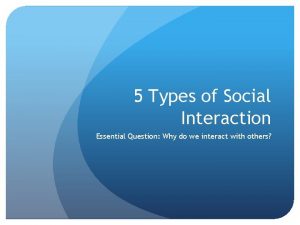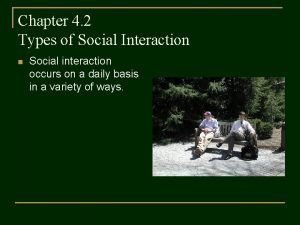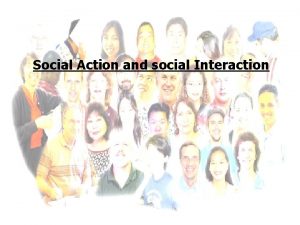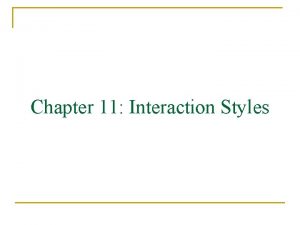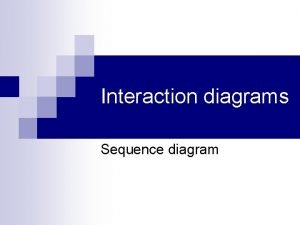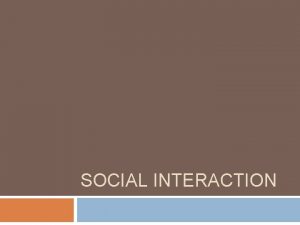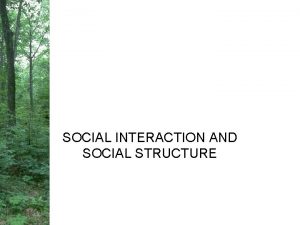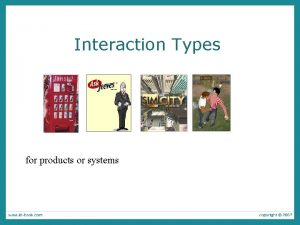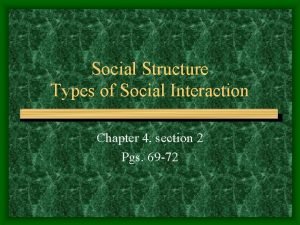Types of Social Interaction Unit 3 Social Structure








- Slides: 8

Types of Social Interaction Unit 3 Social Structure

5 Types of Social Interaction • Social interaction is important in groups because people take on different roles in a group than they do as an individual • There are different processes and forces that determine how individuals behave in a group • The 5 interactions are cooperation, conflict, social exchange, coercion and conformity

Cooperation • Cooperation is a type of interaction where individuals or group combine their efforts to accomplish a goal or task • Cooperation works best when there are limited resources • Surviving natural disasters needs cooperation • Children need cooperation to agree on how to play a game

Conflict • Groups or individuals that work against each other for a larger scale of the rewards • In conflict, defeating the opponent is considered key § Defeating the opponent may end up being more important than accomplishing the goal • Conflict can be beneficial in some cases it promotes cooperation and unity within opposing groups (solidifies each group) • Conflict also draws attention to social inequalities • Conflict can also cause a needed change in norms, beliefs or values

Social Exchange • Social Exchange is a voluntary action performed in the expectation of getting a reward in return • In social exchange it is the benefit earned that is more important than the relationship • Reciprocity : If you do something for me than I will do something for you • In social exchange the implied question is “what’s in it for me”

Coercion • Coercion is a social interaction in which individuals or groups are forced to behave a certain way • Coercion is the opposite of social exchange • The main element of coercion is domination § Domination can be forceful or subtle through social pressure • The conflict theory best fits with this interaction

Conformity • Conformity is a behavior that matches group behavior § We adapt our behavior to fit the behavior of those around us § Without conformity there would be no churches, universities or governments § Without conformity there would be no culture or social structure § People frequently conform with the ideas of groups so not to avoid being different

Group Think • Irving James came up with the idea of group think • Group think is self-deceptive thinking that is based on conformity to group beliefs and created by group pressure to conform § Created because of the difficulty of going against the decisions made by a group § It also tends to prevent group members from discussing concerns about the decisions • Group think can be avoided in situations where the leaders make an effort to involve everyone in the conversation. Members also know that it is okay to have points of disagreement
